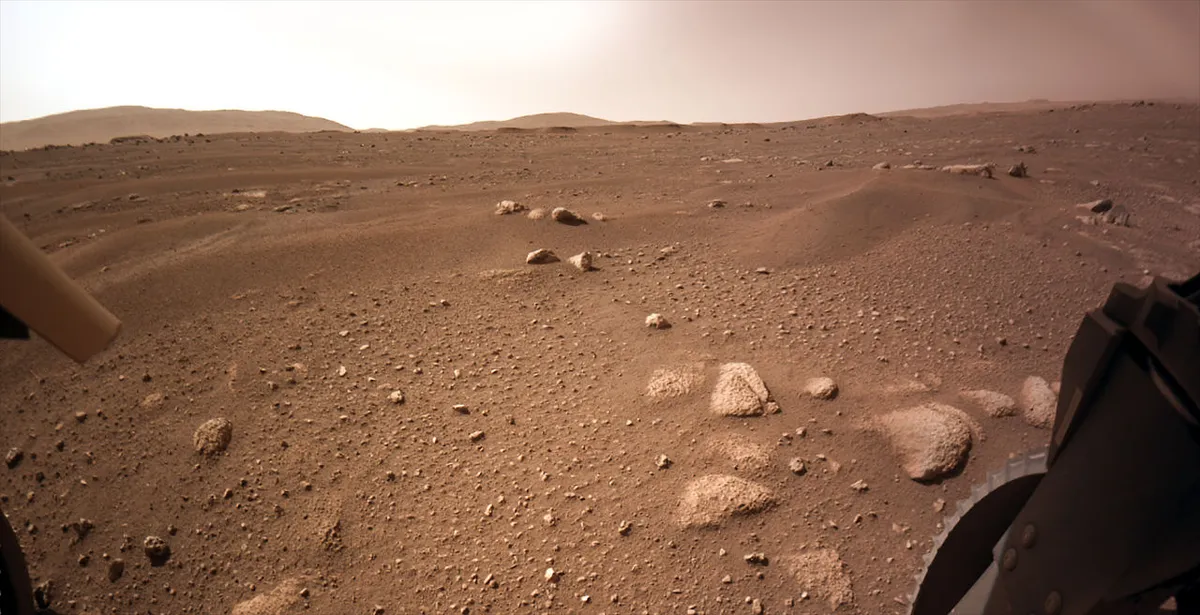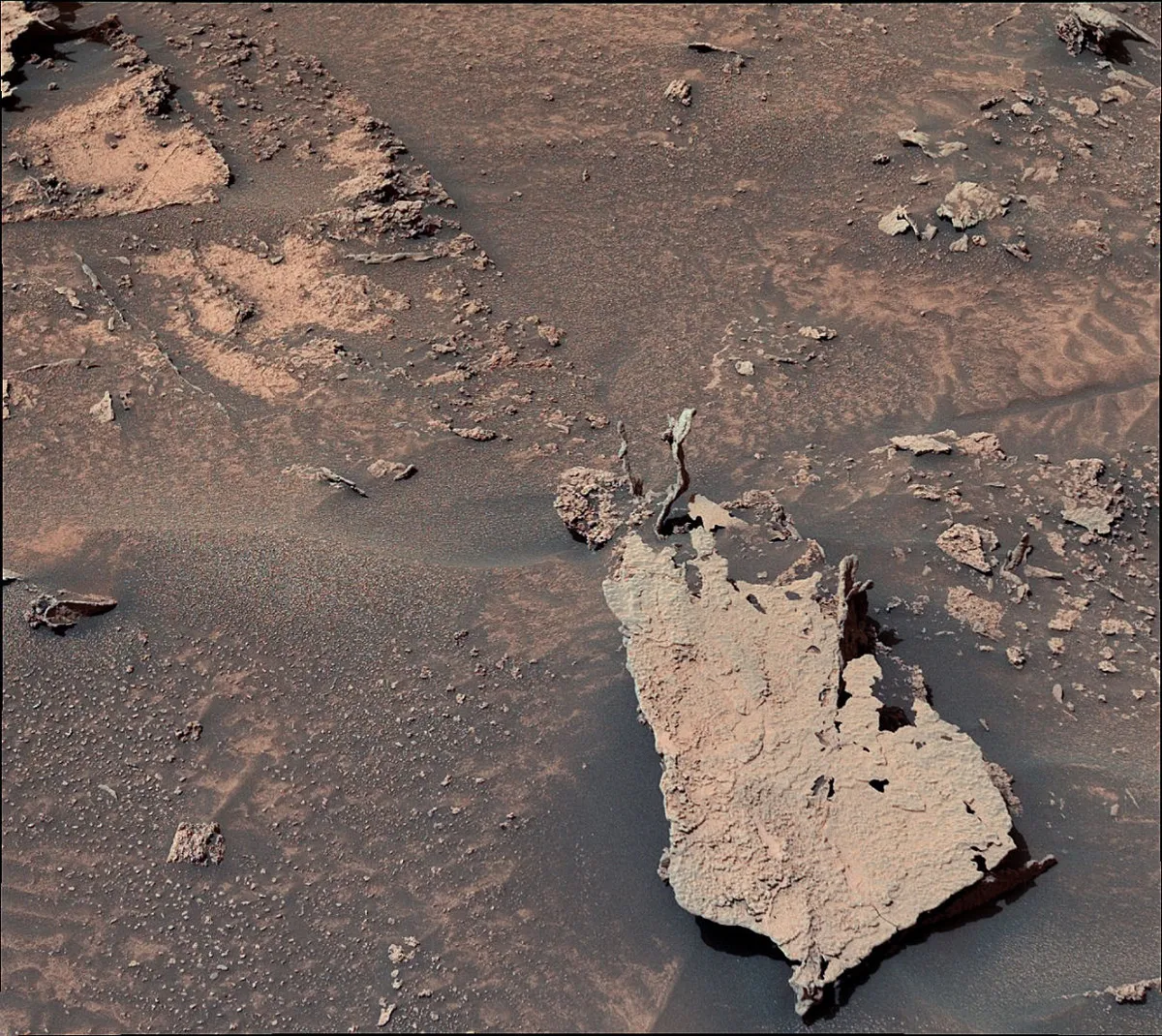When viewed from the Earth, either through a telescope on the ground or by the more sophisticated optics of Earth orbiting space telescopes, it's evident that Mars is red.
Indeed, Mars's striking colour has led to it commonly being referred to as 'the Red Planet'.
But if you could visit and spend a day on Mars, would you really see that the surface is bright red?
A plethora of spacecraft, including several landers like Curiosity rover and Perseverance rover, have now visited and documented Mars in some detail, revealing the red surface to be more butterscotch in tone.

Mars's red colour is not restricted to its surface either – its atmosphere also exhibits a reddish hue.
Mars’s red colour stems from the presence of an iron oxide: rust in other words.
Generally, the iron oxide that gives Mars its red colour is considered to be haematite, which is red when powdered, and is present in a thin surface covering of soil over the planet.
These haematite grains are extremely fine.
Some are so fine that even in the thin Martian atmosphere they can become lofted up, adding red colour there too.

Mars's red colour chemistry
How did the haematite powder that gives Mars its red colour form? What's going on in terms of chemistry?
The exact reason why Mars is red is debated, with possible explanations including chemical reactions of precursor metallic iron or another iron oxide mineral called magnetite with water, molecular oxygen or even hydrogen peroxide.
It has also been suggested that haematite can be produced simply by physically breaking up magnetite grains alongside other minerals, which provide additional oxygen to convert it to haematite.
In 2025, scientists published a study showing that Mars's colour could actually be a result of ferrihydrite, providing new clues as to the history of water on the planet and its habitability.

Has Mars always been red?
Mars has not always been red – in its distant past, the planet is thought to have been more like Earth, with large bodies of liquid water on its surface, a much thicker atmosphere and active volcanoes.
When the atmosphere and water disappeared and the volcanoes went quiet, wind based – or Aeolian – erosion took over and the red soil we see today formed.

